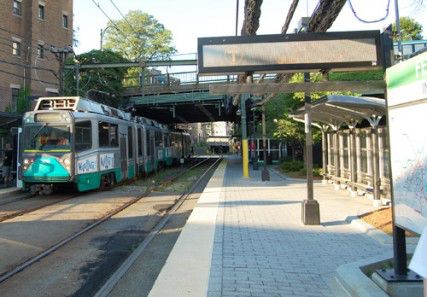Few Boston University students said they have changed their transportation routines since the Massachusetts Bay Transportation Authority fare hikes enacted in July.

“I’ll walk if it’s close enough, rather than spending an extra 25 cents,” said Liz Marandola, a College of Arts and Sciences junior. “If it’s up near Packard’s Corner, I’ll walk to that.”
Spencer Diehl, a School of Management junior, said the fare hikes have been frustrating but not a major impact on his personal budget.
“Every time I swipe my Charlie Card, it [costs] more, so, it’s a bit of a pain,” he said. “[It hasn’t affected my budget] significantly because I don’t really use it daily, so it’s more of a long term budget impact.”
Sofi Fligelman, a College of Communication senior, said while she does not often use the T, the price increase is still inconvenient.
“It’s kind of slow, and I just don’t need to take it that often, and now that it’s more [expensive], there’s even less of a point for me to take it,” she said.
The MBTA officially raised fares an average of 23 percent in July to add financial stability, said MBTA spokesman Joe Pesaturo in an email.
“Additional revenue was necessary to balance the MBTA’s budget,” Pesaturo said.
Many BU students said they use the T for to farther travel, such as grocery shopping, visiting other colleges or getting downtown.
“I use it maybe twice a week, to go back and forth with my boyfriend, who lives at Northeastern,” Marandola said.
Conor Glover, a CAS senior, said he occasionally uses the T to attend distant classes, but usually tries to avoid public transportation.
“I’ve always tended to choose the BU shuttle over the T if I could,” he said. “In terms of going to class, the T is kind of my last resort if I’m really late, or really don’t want to walk.”
Pesaturo said MBTA officials were surprised at the effects of the fare hike.
“Analysts had projected an annual ridership decline of up to 5.5 percent,” he said. “But instead, ridership has actually increased since the new fare structure was implemented.”
According to statistics released by the MBTA, August rail ridership increased 1.2 percent from August 2011.
Diehl said he noticed the fare increase has not improved faults with the T.
“I think it was not necessary for them to hike it up, I think it was probably like a reasonable price before,” he said. “I just expect them to improve it in the future, as far as timing and everything, if they’re going to increase the price.”
Fligelman also said the T is not run as efficiently as possible.
“I don’t understand why the cost went up, and it’s really slow, and I don’t think it’s — and I’m talking about the T, not the bus — the most efficient form of transportation for students commuting,” she said. “It’s really slow, especially on BU’s campus.”
Pesaturo says the MBTA is actively trying to improve customer service to increase both ridership and revenue.
“We continue to make improvements in reliability, safety and customer service, including the recent introduction of ‘countdown’ signs on the subway system, the new CharlieCard Store and Mobile Ticketing for Commuter Rail,” he said.
Marandola said the most important factor in her T usage is destination.
“If [the fare] was back to what it was, I’d be happier,” she said. “I don’t know if I’d be like, if it would really change my habits. It all depends on where I’m going.”
This is an account occasionally used by the Daily Free Press editors to post archived posts from previous iterations of the site or otherwise for special circumstance publications. See authorship info on the byline at the top of the page.



